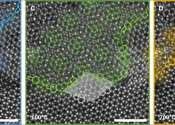Intelligent liquid: Researchers develop metafluid with programmable response
Researchers from the Harvard John A. Paulson School of Engineering and Applied Sciences (SEAS) have developed a programmable metafluid with tunable springiness, optical properties, viscosity and even the ability to transition ...









